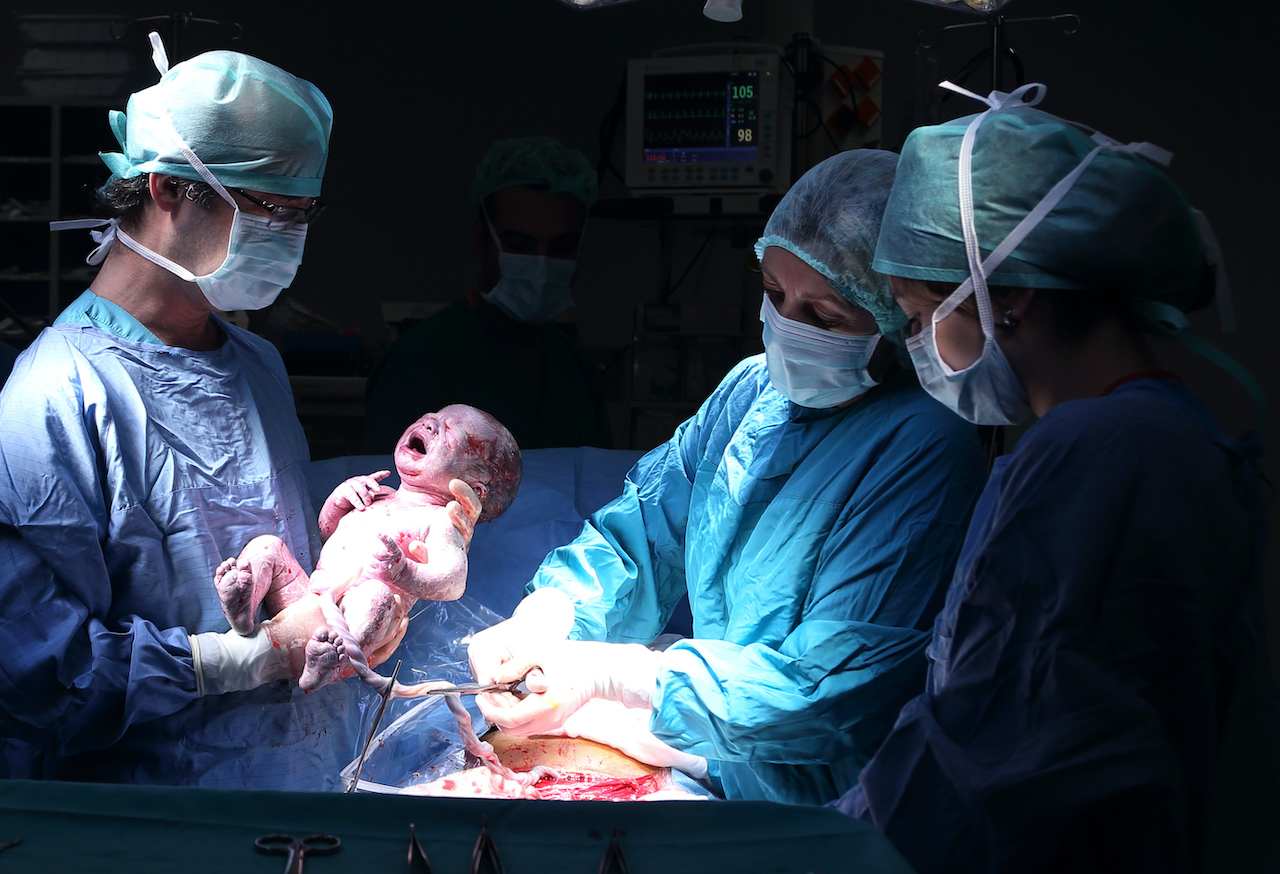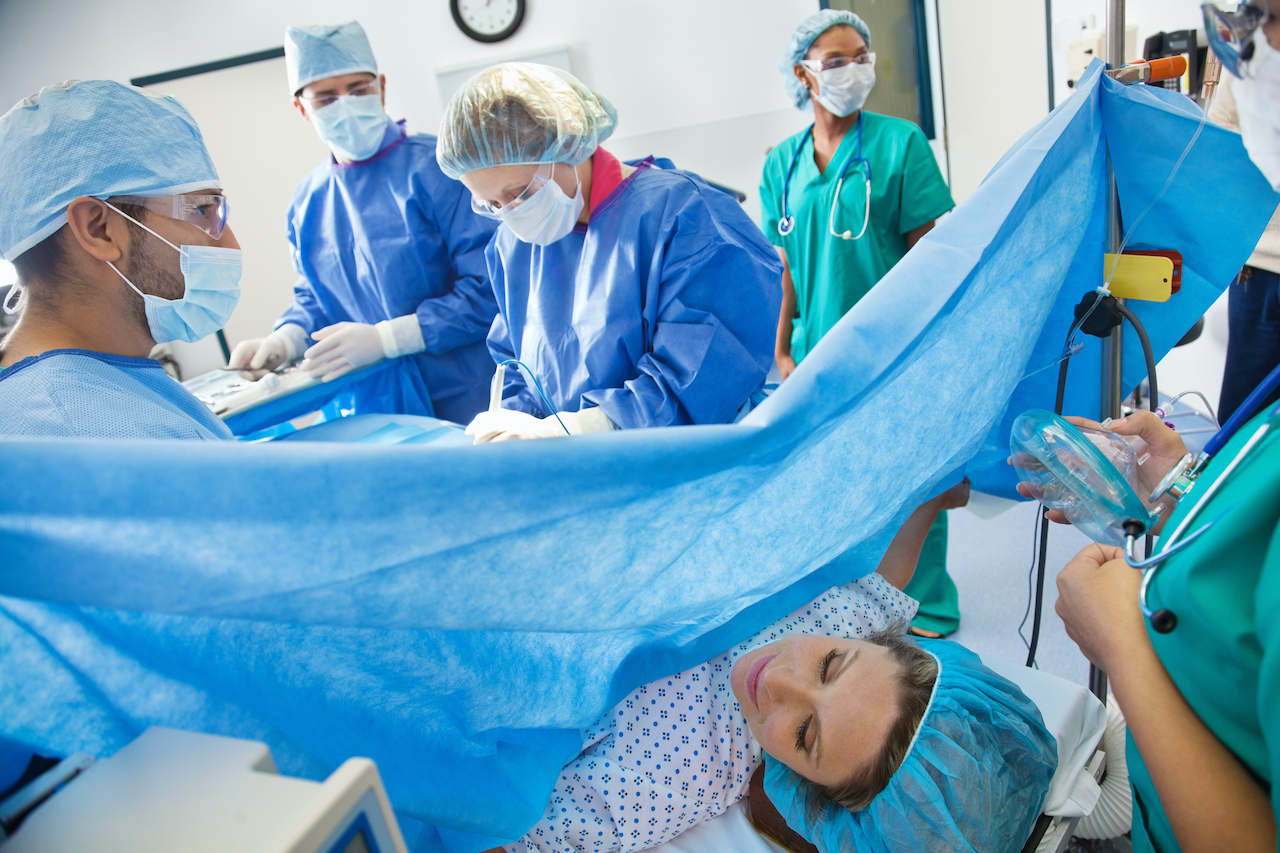C-Section: Procedure & recovery
How is a baby delivered through incisions in the mother’s abdomen and uterus?

A C-section, or Caesarean section (also spelled Cesarean section), is a type of surgery used to deliver a baby. The baby is surgically removed through an incision in the mother's abdomen and then a second incision in the uterus.
Nearly one third of pregnant women in the United States gave birth by Caesarean section in 2020, according to the most recent birth statistics from the Centers for Disease Control and Prevention (CDC). Worldwide, 21 percent of babies are born by C-section, but in around 1990 only 7 percent were delivered this way, according to the World Health Organization (WHO).
These increased rates of Caesarean deliveries have been linked with a variety of different factors from rising rates of obesity and diabetes to multiple births and increased maternal age, according to the BBC.
Other reasons for high C-section rates include the use of epidurals and techniques that induce labor, which may cause complications that could result in the need to perform a surgical delivery, according to the Journal of Perinatal Education.
Although Caesarean births can be life saving for both mother and baby, the American College of Obstetricians and Gynecologists (ACOG) has expressed concern that C-section deliveries might be overused, and they have recommended ways to reduce the national rate.

These new guidelines call for allowing most women with low-risk pregnancies to spend more time in the first-stage of labor, as well as encouraging women to avoid excessive weight gain during pregnancy (a larger baby may be harder to safely pass through a woman's pelvis.)
The key to reducing high C-section rates in the United States is preventing unnecessary first C-sections, said Dr. Allison Bryant, a maternal fetal medicine specialist at Massachusetts General Hospital in Boston.
Get the world’s most fascinating discoveries delivered straight to your inbox.
These days, the majority of women who have delivered their first baby by C-section will wind up having a repeat C-section somewhere down the road, she said.
A woman who has already had a C section for a previous birth may be advised to do so again if they have another baby, according to the National Health Service UK (NHS) website. However, studies have found that women who have had C-sections and attempt to deliver their next children vaginally, which researchers call a VBAC (vaginal birth after Caesarean), may have a relatively low rate of complications afterward, such as needing blood transfusions or unplanned hysterectomies, compared with women who scheduled a C-section.
It's important to understand why one-third of American babies are being delivered by Caesarean, Bryant said. We need to figure out which babies really need to be delivered by C-section to protect their health and which of these surgeries may be unnecessary, she explained.
One way to possibly reduce C-section rates in this country is to educate women about the benefits of vaginal delivery, Bryant said.
The following information will explain what is involved in a C-section, and how a woman may feel before, during and after this surgery.
Before surgery
To prepare for the operation, an IV will be placed in a woman's arm or hand to give her the fluids and medications she'll need during surgery. Her abdomen will be washed and her pubic hair may be clipped or trimmed.
A catheter (tube) is placed into a woman's bladder to remove urine, and it will remain there for 12-18 hours after the surgery, according to the NHS.
Women are usually given regional anesthesia, either an epidural block or a spinal block, which both numb the lower half of her body but will allow the mother to be awake when her baby is born. This tends to be safer than general anesthesia, where a woman would be totally asleep during the delivery, Bryant said.
How a C-section is done

The obstetrician will use a knife to make a horizontal incision in the skin and the abdominal wall, usually along the bikini line, meaning that it's low enough down on the pelvis that it would be covered up by underwear or a bikini bottom, Bryant said. Some women may get a vertical, or up-and-down cut, she said.
After the abdomen is opened, an incision is made in the uterus. Typically, a side-to-side (horizontal) cut is made, which ruptures the amniotic sac surrounding the baby, Bryant said. Once this protective membrane is ruptured, the baby is removed from the uterus, the umbilical cord is cut, and the placenta is removed. The baby is examined then given back to the mother for skin-to-skin contact.
Bryant explained that the cut made to a woman's uterine wall is an important one because the way this uterine scar heals can affect her ability to have a vaginal birth in the future.
Once the delivery and afterbirth are completed, the cuts made to the mother's uterus are repaired with stitches, which will eventually dissolve under the skin, according to the Research Journal of Pharmaceutical Dosage Forms and Technology. The abdominal skin is closed with stitches or with staples, which will be removed before a woman leaves the hospital.
A woman typically spends 60 to 120 minutes in the operating room for a C-section, depending upon whether any complications arise during the delivery, Bryant said. After the surgery, a woman will be taken to the hospital's maternity ward to recover.
Recovering from a C-section
After a C-section, a woman may spend between 2 to 4 days in the hospital, but it may take her up to 6 weeks to feel more like herself again, Bryant said.
Her abdomen will feel sore from the surgery and the skin and nerves in this area will need time to heal. Women will be given pain medications to take the edge off any post-surgical pain, and most women use these medications for about 2 weeks afterward, Bryant said.
A woman may also experience bleeding for about 4 to 6 weeks after a surgical birth. She is also advised to not have sex for a few weeks after her C-section and to also avoid strenuous activities, such as lifting heavy objects, according to the Victoria State Government Department of Health.
Additional resources
You can read more about C-sections and related studies at the National Library of Medicine website. For answers to some commonly-asked questions about C-sections, read this document from the Royal College of Obstetricians and Gynaecologist.
Bibliography
"Epidurals: Do They or Don’t They Increase Cesareans?". The Journal of Perinatal Education (2015). https://www.ncbi.nlm.nih.gov/pmc/articles/PMC4718011.
"Safe Prevention of the Primary Cesarean Delivery". American College of Obstetricians and Gynecologists (2019). https://www.acog.org/clinical
"A Brief Review on Vaginal and Cesarean Delivery". Research Journal of Pharmaceutical Dosage Forms and Technology (2020). https://www.indianjournals.com/ijor.aspx
Cari Nierenberg has been writing about health and wellness topics for online news outlets and print publications for more than two decades. Her work has been published by Live Science, The Washington Post, WebMD, Scientific American, among others. She has a Bachelor of Science degree in nutrition from Cornell University and a Master of Science degree in Nutrition and Communication from Boston University.
- Ailsa HarveyContributor
